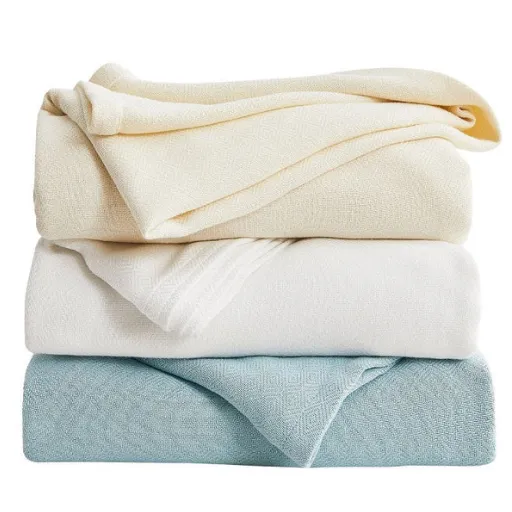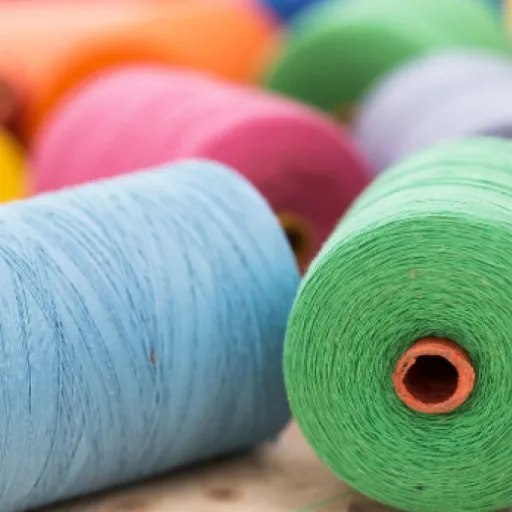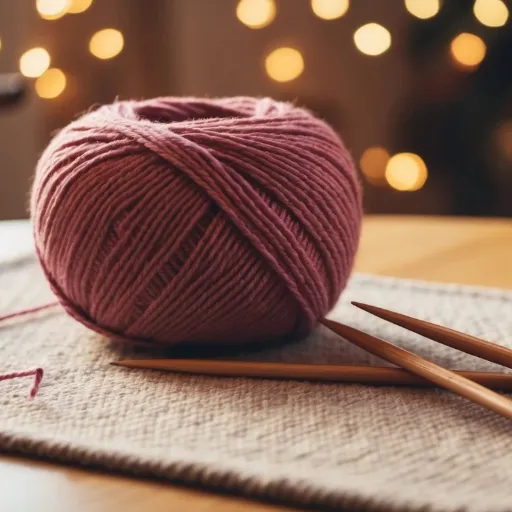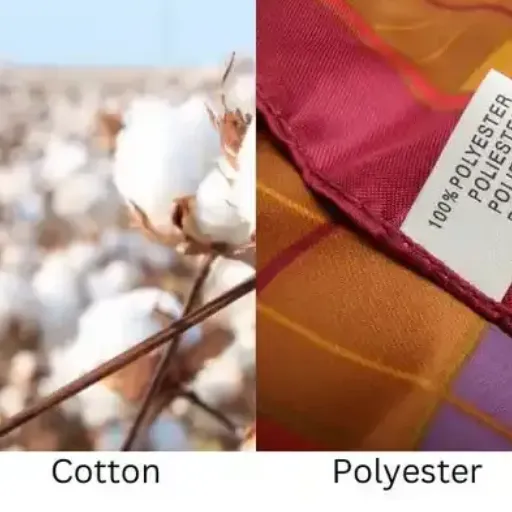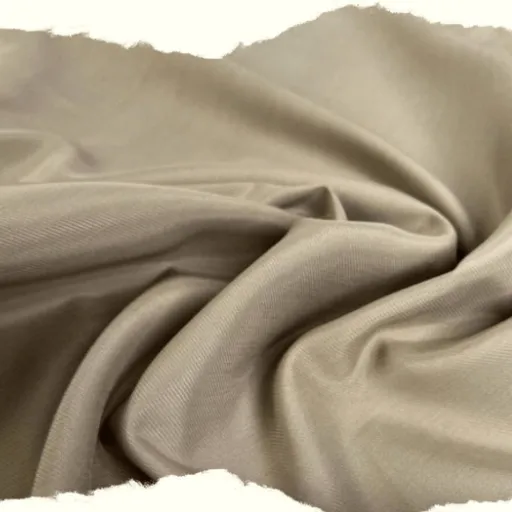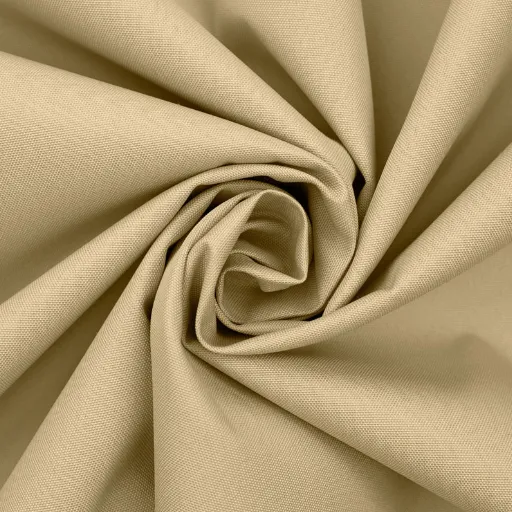Nylon and acrylic are two synthetic fibers that are pretty similar to each other, but at the same time differ in their properties. This is the reason why they are used in so many industries, from fashion to home furnishings. If you’re not sure which fiber—nylon or acrylic—will suit your needs best, this article will help you with that. You will learn about their unique features, strengths, and weaknesses, as well as the applications for which they are most suitable. This way, you’ll be able to make a confident choice and select the one that perfectly meets your requirements. So, do not miss the chance to discover nylon and acrylic’s key differences!
Key Characteristics of Nylon and Acrylic
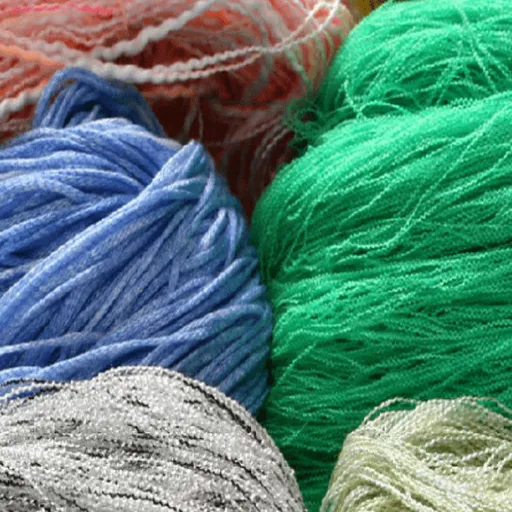
Nylon
- Durability: Highly durable and resistant to wear and tear. Often used in products requiring strength, such as ropes, clothing, and carpets.
- Moisture Resistance: Low absorbency, making it quick-drying and resistant to mildew.
- Flexibility: Smooth and flexible, ideal for applications needing a soft yet firm material.
- Heat Sensitivity: The material can melt at high temperatures, requiring careful use near heat sources.
Acrylic
- Softness: Mimics the feel of wool, making it popular for sweaters, blankets, and upholstery.
- Lightweight: Lighter than most other fibers, adding comfort without bulk.
- Color Retention: Excellent at holding color over time, resisting fading effectively.
- Moisture-Wicking: Absorbs little water, ensuring it stays dry and suitable for various weather conditions.
High Tensile Strength and Durability of Nylon
Nylon has an excellent reputation because of its outstanding tensile strength and durability; hence, it is a material of choice in many different sectors. It was first made as a synthetic substitute for silk, but soon caught the attention of industry because of its strength and multi-use characteristics. It can endure a lot of tension without being torn apart, which is why it is used in applications such as ropes, fishing lines, and industrial fabrics. Furthermore, its resistance to abrasion and wear makes it last longer, even in harsh environments. The combination of strength and durability keeps nylon at the center of various applications, from textiles to engineering.
Soft Texture and Color Retention of Acrylic
Acrylic fibers have gained tremendous appreciation due to their incredibly soft, wool-like texture, making them the most widely used fiber for producing winter garments such as sweaters, scarves, and blankets. Another characteristic of acrylic that truly impresses everyone is its extraordinary and rare ability to keep colors pure and bright for a long time. The special chemical structure of acrylic fibers allows significant dye absorption, resulting in fabrics that remain very vibrant even after extensive washing and sun-tanning. This characteristic has secured acrylic’s position as a major player in the textile industry, not only in the fashion sector but also in the home sector, due to its attributes such as light weight and heat insulation.
Applications of Nylon and Acrylic
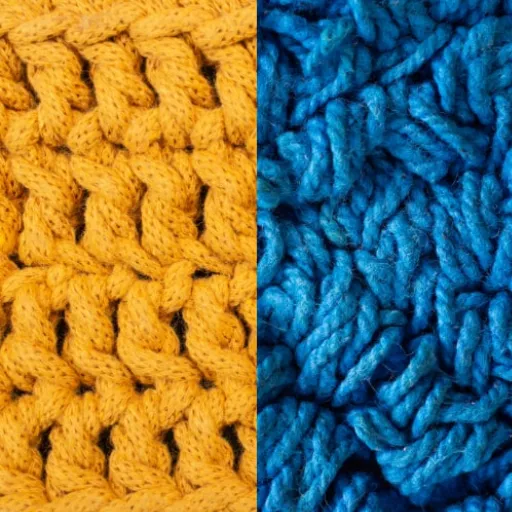
Nylon:
- Its excellent and long-lasting characteristics, such as durability, elasticity, and moisture-wicking properties, have made it a major player in the textile industry. It is used in the production of clothing, particularly hosiery, activewear, and outerwear.
- Its strong and wear-resistant nature has made it an indispensable material in various industrial applications, such as ropes, fishing nets, and parachutes.
- The fibers of nylon are often used in the manufacturing of carpets and upholstery due to their strength and ease of maintenance.
Acrylic:
- Due to its exceptional softness and wool-like qualities, this textile is often seen in fashion as the primary material for the production of sweaters, scarves, and blankets.
- Home furnishing markets have widely accepted acrylic as a material for rugs and upholstery because of its bright and consistent color and high durability.
- Moreover, they are found in outdoor textiles such as awnings and patio furniture covers, as they resist fading and weather damage.
Nylon in Outdoor Gear and Activewear
Nylon has become very popular among outdoor gear and activewear because it has great versatility and performance. Apart from being outstanding in durability and lightness, nylon is also used in making items such as bags, jackets, and tents that provide long-lasting service even in harsh conditions. Its excellent moisture-wicking properties, fast drying, and abrasion resistance are the qualities that make it sought after by athletes and outdoor enthusiasts. Along with that, nylon’s elasticity allows for the creation of comfortable, movement-free clothing that can be used in a variety of activities, from hiking to running. Also, many modern nylon blends have been developed to improve breathability and regulate body temperature, thus putting nylon at the forefront of performance wear fashion.
Acrylic in Home Decor and Apparel
Acrylic is a very flexible material used in lighting and clothing, praised for its durability, low weight, and beautiful looks. It often imitates the soft feel of wool, which is one reason it is widely used for items like sweaters, blankets, and scarves. Moreover, it is very hard-wearing, fade-resistant, and not prone to shrinkage, ensuring it will last even if you use it frequently. In the case of home décor, acrylic’s clarity and ability to be shaped into complex, beautiful forms make it very suitable for modern furniture, decorative accents, and even artworks. Its ability to take up bright colors has made acrylic ideal for producing bold and vibrant designs in both fashion and interior decoration, thus cementing its popularity.
Durability Comparison: Nylon vs Acrylic
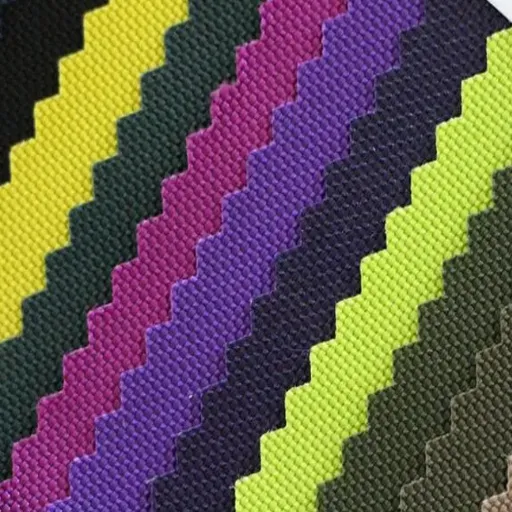
If nylon and acrylic are compared in terms of durability, nylon would be the one to get the nod, as it is generally the stronger of the two. Nylon shows excellent resistance to abrasion, stretching, and impact, so it is the material of choice for heavy-duty applications like ropes, textiles, and industrial products. Acrylic, meanwhile, has good durability, but it is less demanding than nylon. Though it resists wear and fading, it might crack or get a scratch more easily under heavy stress than nylon. Yet, the fact that acrylic can maintain its clarity and hideous red tone for a long time gives it durability in areas where physical strength is not crucial.
Resistance to Abrasion in Nylon
Nylon is one of the most reliable materials owing to its superior resistance to abrasion, and it is widely accepted as such. The molecular structure of nylon allows it to withstand friction without losing its strength and to survive even harsh conditions. According to the most recent data, nylon’s remarkable ability to resist abrasion will continue to be an advantage, particularly in industries like automotive, construction, and outdoor gear manufacturing, where materials are constantly subjected to mechanical stress. This property not only prolongs the life of the products but also minimizes the need for replacements, thus making nylon a financially and environmentally friendly option.
Pilling and Wear of Acrylic
Acrylic fibers are acknowledged for their lightweight and soft characteristics; however, they tend to be susceptible to pilling over time. Pilling is the process where the fabric’s surface fibers, which are already loose, are rubbed against each other, causing them to form small balls that are not only unsightly but also uncomfortable. The latest reports show that this phenomenon is mainly found in clothing items like sweaters, as well as in upholstery and other frequently touched items. In the course of evolving, manufacturing processes have enabled the creation of modified acrylic fibers that are less prone to pilling yet remain as durable and high-performing as the original ones. Regular maintenance, such as using fabric shavers and washing garments inside out, can also help reduce wear and prolong the lifespan of acrylic-based products.
Environmental Impact of Nylon and Acrylic
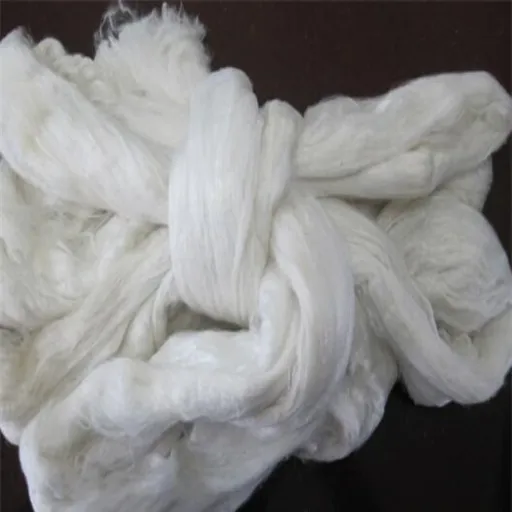
The entire lifecycle of both nylon and acrylic significantly impacts the environment. The process of nylon production takes a toll on the environment due to the energy required, which in turn releases greenhouse gases, including nitrous oxide, a significant contributor to climate change. Acrylic, on the other hand, has its fibers made from polyacrylonitrile, a non-renewable resource, thereby still using fossil fuels and hence depleting the natural resources. Apart from that, both materials are non-degradable, leading to the long-term accumulation of plastic waste in landfills or even oceans. Also, during their use and washing, synthetic fibers like nylon and acrylic release microplastics, which get trapped in ecosystems and thus endanger both wildlife and human health. To counter these impacts, adopting measures such as creating and using recycled materials and providing the market with sustainable options is essential.
Recycled Nylon Options and Innovations
Recycled nylon is an up-and-coming approach that aims to reduce the environmental impact caused by the production of conventional nylon. The most common source of recycled nylon is old fishing nets, which are gathered and then turned into high-quality nylon fibers through methods such as mechanical recycling or chemical depolymerization. Alternatively, post-industrial waste, consisting of fabric scraps and nylon manufacturing by-products, can be processed into usable materials. Moreover, companies have partnered with advanced technology to produce ECONYL®, a well-known type of regenerated nylon. This process not only minimizes waste but also decreases carbon emissions significantly when compared to virgin nylon production. These developments signify a hopeful transition towards circular economy practices, which not only take care of environmental sustainability but also satisfy the need for strong, high-performance materials.
The Future of Sustainable Acrylic Production
The sustainable acrylic production future depends on innovations and the adoption of eco-friendly manufacturing processes. Scientists are looking for bio-based options from renewable sources like plants to substitute the traditional oil-based acrylics. Furthermore, innovations in recycling technology are leading to the creation of closed-loop systems where acrylic can be dismantled and reused with little or no quality loss. The goal of these processes is to reduce power usage, decrease carbon emissions, and minimize environmental impact. The acrylic sector is gradually moving towards producing environmentally responsible, high-performance materials by supporting and utilizing the latest technologies.
Practical Guide: Choosing Between Nylon and Acrylic
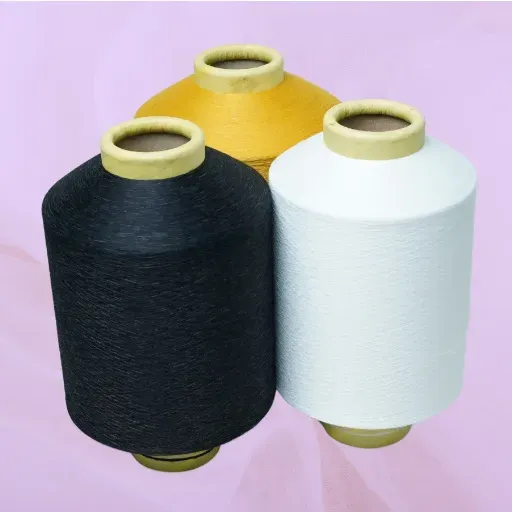
| Factor | Details |
|---|---|
| Durability | Nylon ranks at the top in durability, being the most resistant material to abrasion and at the same time highly flexible, hence perfect for applications needing both strength and longevity. Whereas acrylic is strong, it is not as durable as nylon, and it is more vulnerable to scratches. |
| Weight | Nylon, being lightweight, is perfect for projects where minimizing the weight is the main factor. Acrylic is a little heavier, but it has excellent optical clarity, which makes it a good choice for display or decorative purposes. |
| Weather Resistance | In terms of UV stability and weather resistance, acrylic completely surpasses nylon, making it the most suitable option for exterior use. Nylon will eventually, through degradation, give in to sunlight unless treated with UV. |
| Cost | Although considered the cheaper alternative, nylon is more cost-effective for mass production and heavy-duty applications. Acrylic, often considered a premium material, can be more expensive but adds value in terms of aesthetics. |
| Visual Appeal | Acrylic can deliver a glass-like clarity and high gloss finish, making it suitable for signs, displays, and decorations. Nylon does not have such optical properties, but its functional and performance-driven applications are still strong. |
For Durability: Opting for Nylon
When durability is the primary consideration, Nylon becomes the choice par excellence. Its exceptional durability, coupled with high tensile strength, abrasion resistance, and ability to perform under extreme conditions, characterizes it as a reliable material for such demanding applications. Recent data analysis indicates that Nylon remains a preferred material in the automotive, aerospace, and textiles industries, where components are subjected to intensive wear and tear. Besides, nylon’s ability to withstand stretching and bending assures its longer life than many rival materials, thus meeting the need for sustainable and economical solutions that are becoming increasingly so.
For Budget: Selecting Acrylic
Acrylic is recognized as the best economical material because of its low cost and multifaceted uses. The most recent information from search trends shows that acrylic is still one of the most widely used materials in different industries, particularly in design and retail. Its light weight, high transparency, and impact resistance turn it into an excellent replacement for glass in applications like signage, displays, and protective barriers. Moreover, the machinability and fabricability of acrylic mean that production costs are reduced without compromising quality. Hence, the question of why acrylic is often the preferred material for budget-conscious projects is answered by the combination of cost-efficiency and adaptability.
For Sustainability: Evaluating Recycled Options
I continuously assess the sustainability of recycled acrylic as an option that offers the same value and even more. Besides, it disposes of waste to almost the same amount as it provides, with the acrylic offering main features of longevity and multipurpose use, among others. I am taking part in a circular economy by favoring recycled materials, ensuring that the quality and functionality of my projects are not affected.
Reference Sources
Here are five professional and authoritative reference sources that you can use to verify the correctness of your article on “nylon vs acrylic.” These sources are academic and provide detailed studies or comparisons of the materials:
- Comparison between retention of maxillary acrylic and nylon denture base materials
Source: Polytechnic Journal - Evaluation of the color stability of methyl methacrylate and nylon-based polymer
Source: PubMed Central (PMC) - Some flexural properties of a nylon denture base polymer
Source: Wiley Online Library - The comparison of surface hardness between thermoplastic nylon resin and heat-cured acrylic resin
Source: Jurnal Unpad - The use of nylon as a denture base material
Source: ScienceDirect
Frequently Asked Questions (FAQs)
What are the main differences between nylon and acrylic fabrics?
Nylon and acrylic are both man-made synthetic fabrics, but they differ in composition and properties. Nylon, a polyamide, is known for its strength, elasticity, and resistance to abrasion. It’s often used in high-performance clothing and gear. Acrylic, on the other hand, is made from polymerized acrylonitrile and is valued for its softness and warmth, resembling wool. While nylon is more durable, acrylic provides sound insulation and is lightweight.
How does nylon fabric compare to polyester fabric?
Nylon fabric and polyester fabric are both synthetic fibers derived from petroleum. Nylon excels in elasticity and strength, making it ideal for activewear, while polyester offers better moisture-wicking properties. Polyester is also more resistant to shrinking and fading, whereas nylon can be more prone to static electricity. Both fabrics are widely used in various clothing materials and applications.
Is acrylic better than nylon for warmth?
Acrylic is often considered better than nylon for warmth because it is designed to mimic the insulating properties of wool. It’s a lightweight fabric that retains heat effectively, making it suitable for colder climates. Nylon, while strong and durable, does not offer the same level of insulation and is generally used in performance apparel rather than for warmth.
What are the common uses of nylon and acrylic in clothing?
Nylon is commonly used in activewear, pantyhose, and outdoor gear due to its strength and elasticity. Acrylic, on the other hand, is frequently found in sweaters, blankets, and other warm clothing items, as it is soft and resembles wool. Both fibers are used in a variety of clothing materials, often blended with other fibers for enhanced properties.
What are the dyeing properties of nylon and acrylic fabrics?
Dyeing nylon can be challenging as it requires specific dyes and techniques to achieve vibrant colors. In contrast, acrylic has good dyeability, allowing for a broad spectrum of colors. However, both fabrics can have issues with colorfastness, and over time, acrylic fabric may turn yellow when exposed to sunlight.
How do nylon and acrylic perform in terms of moisture absorption?
Both nylon and acrylic fabrics have poor moisture absorption properties compared to natural fibers like cotton or wool. Nylon tends to wick moisture away quickly, making it suitable for activewear. Acrylic, on the other hand, is not effective in absorbing moisture, which can lead to discomfort during physical activities. This characteristic makes both fibers less ideal for hot and humid environments.
Are there any environmental considerations when using nylon and acrylic?
Nylon and acrylic are both made from petroleum-based raw materials, leading to concerns about their environmental impact. While nylon is more durable and longer-lasting, acrylic is easily recycled. However, neither fabrics decompose easily in landfills. Sustainable alternatives and practices, such as using recycled fibers, are increasingly being explored to mitigate these impacts.
What is the impact strength of nylon compared to acrylic?
Nylon has a higher impact strength than acrylic, making it more suitable for applications requiring durability and resistance to wear and tear. This characteristic is essential for high-performance clothing and gear. Acrylic, while soft and warm, has poorer abrasion resistance, which can limit its use in demanding environments.
Can nylon and acrylic be blended with other fibers?
Yes, both nylon and acrylic can be blended with other fibers such as spandex for added elasticity or polyester for enhanced durability. Blending these fibers creates fabrics that combine the desirable properties of each, such as improved elasticity, strength, and comfort. This versatility allows for a wide range of uses in clothing and textiles.








